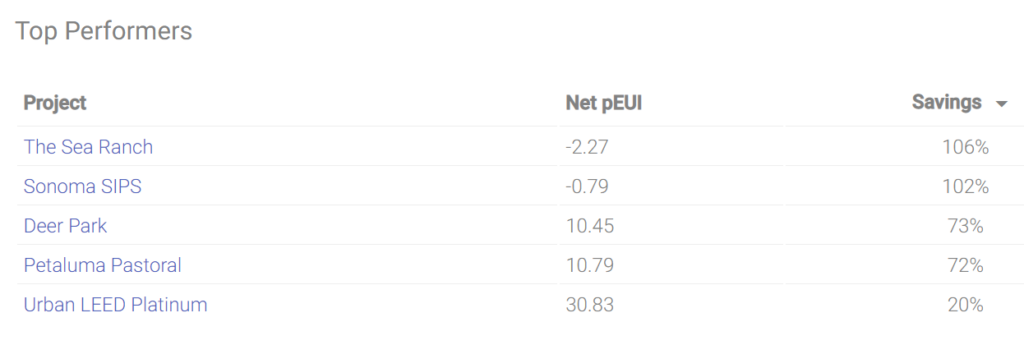In coming weeks, DNM Architecture will publish the net Predicted Energy Use Intensity (net pEUI) for all of its featured designs as we work to move our industry closer to carbon neutrality and to meet our goals under the AIA 2030 Commitment.

Predicted Energy Use Intensity evaluates a building’s projected overall annual net energy consumption based on energy that is used and produced (by solar panels, usually), and expresses this net energy use as a single number in kBtu/ft²/yr. A lower pEUI, indicates better energy performance and lower carbon emissions. pEUI provides a means to compare buildings with other buildings over time, allowing architects and building owners to track their progress towards the goal of carbon neutrality. It is also used to set goals or “standards” for architects to meet and exceed. For example, the standard residential building’s pEUI is currently 38.4 kBtu/ft²/yr and will be set lower over time as the carbon neutrality bar is “raised.” The pEUI values of DNM Architecture’s projects completed over the past 15 years range from about -2.2 (very good!) to 31 (just OK). The AIA 2030 commitment is to lower the average pEUI for residential projects to less than 7.68 by 2030. Our goal at DNM is to ultimately bring the pEUI down to 0 or less for all projects.

The pEUI compares all buildings equally, whether new or old.
A building that may have been considered very efficient in its day may have a higher pEUI than an average building today because building standards have risen. For example, the insulation standards under the California Energy Code in 2009 required R13 walls, whereas the same minimum today is R21 with rigid insulation on the exterior. An R21 wall back in 2009 would be considered “high efficiency” where today it is barely passing. Additionally, the use of fossil fuels such as natural gas and propane – common in even recent houses – are penalized by the pEUI because of their carbon footprint. As a result, a building from 2010 using a high-efficiency gas furnace may have a higher pEUI than an all-electric building that is just meeting the minimum current code requirements.
What About LEED?
LEED is not just about energy consumption. In fact, energy use is only one relatively small part of the whole LEED picture, which includes material selection, water saving strategies, and indoor air quality, as well as the immediate environment of the project (how far from public transportation etc…). So, while our Urban LEED Platinum project from 2014 is LEED Platinum certified, it has a net pEUI of 30.83, while one of our latest projects – Deer Park – features a net ePUI of just 10.45! That does not mean that Deer Park would be rated LEED Platinum, however. LEED itself is evolving and raising the bar year over year.
